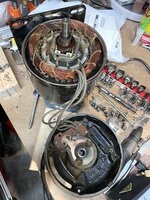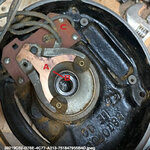InkyMike
Member
Hello everyime
Is anyone here using an older Delta/Rockwell Homelight drill press (or does anyone have experience with them?) I picked up a 1957 11" bench top version the other night. It has some issues with runout , but my dad is a machinist and we will be able to solve for that.
My question is regarding the motor. It ran like a top when I picked it up. Today, as I was measuring some runout, it would buzz longer before starting - the last time it buzzed and didn't start at all. I am guessing (and hoping) it's the starting capacitor.
Has anyone dealt with this? Any info and a source for a replacement cap? I figured I'd ask the collective here before I begin my Google quest.
Thanks much in advance
Michael
Is anyone here using an older Delta/Rockwell Homelight drill press (or does anyone have experience with them?) I picked up a 1957 11" bench top version the other night. It has some issues with runout , but my dad is a machinist and we will be able to solve for that.
My question is regarding the motor. It ran like a top when I picked it up. Today, as I was measuring some runout, it would buzz longer before starting - the last time it buzzed and didn't start at all. I am guessing (and hoping) it's the starting capacitor.
Has anyone dealt with this? Any info and a source for a replacement cap? I figured I'd ask the collective here before I begin my Google quest.
Thanks much in advance
Michael


